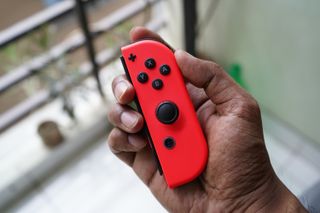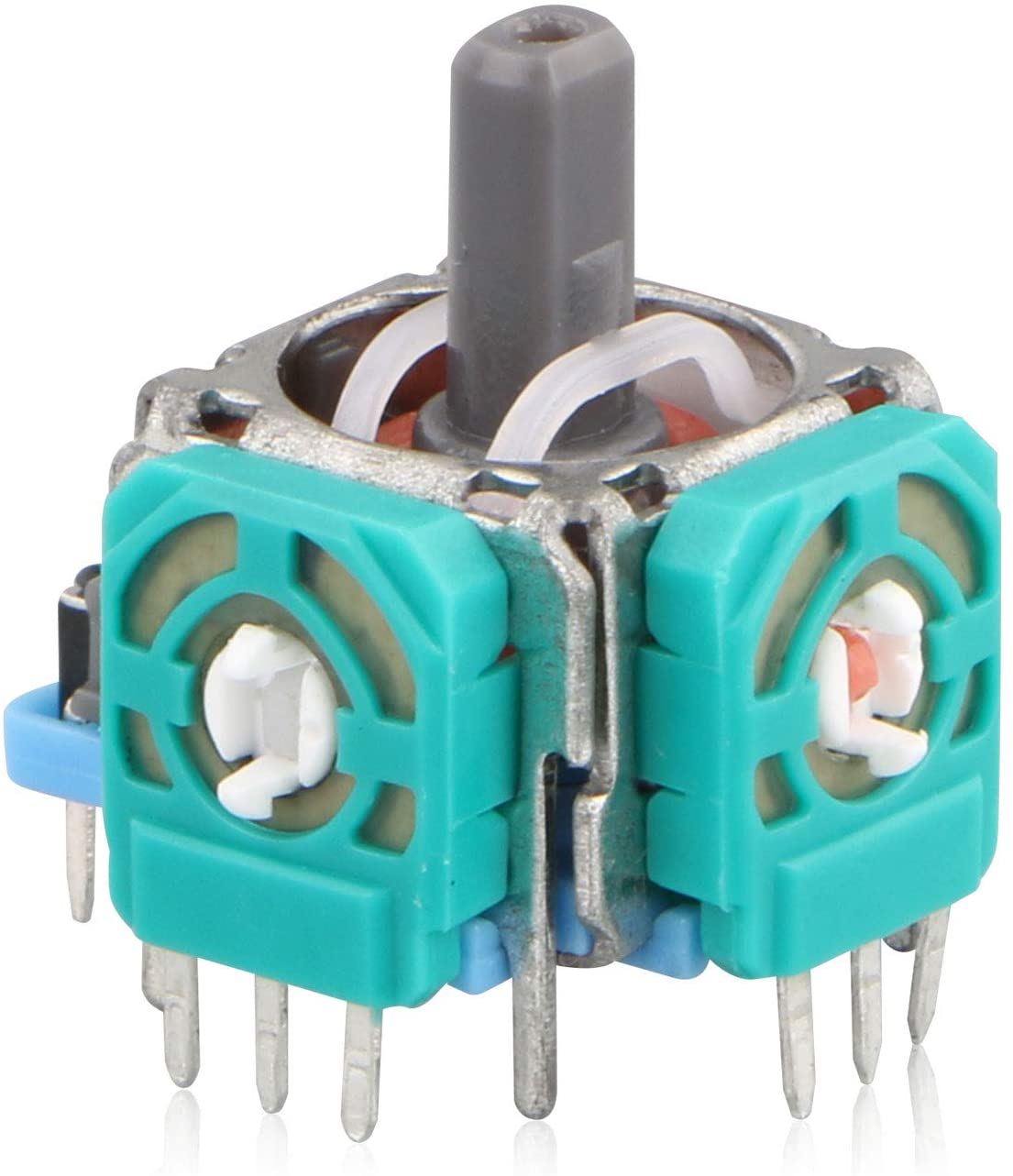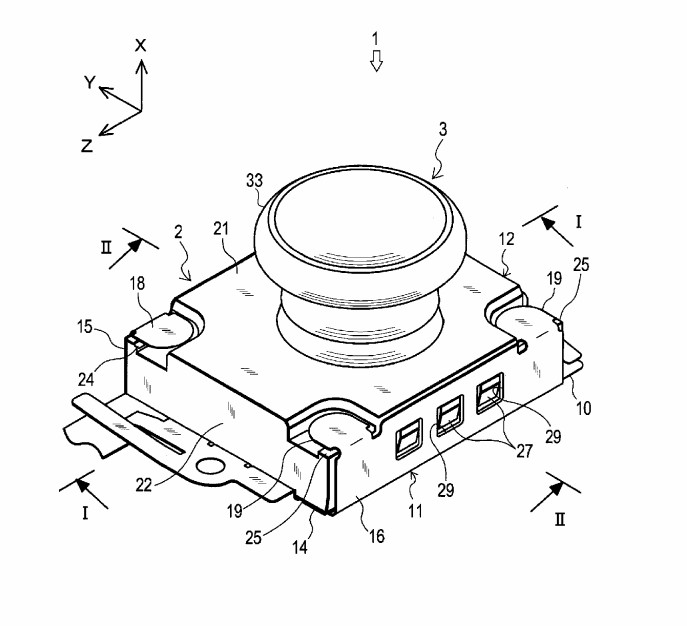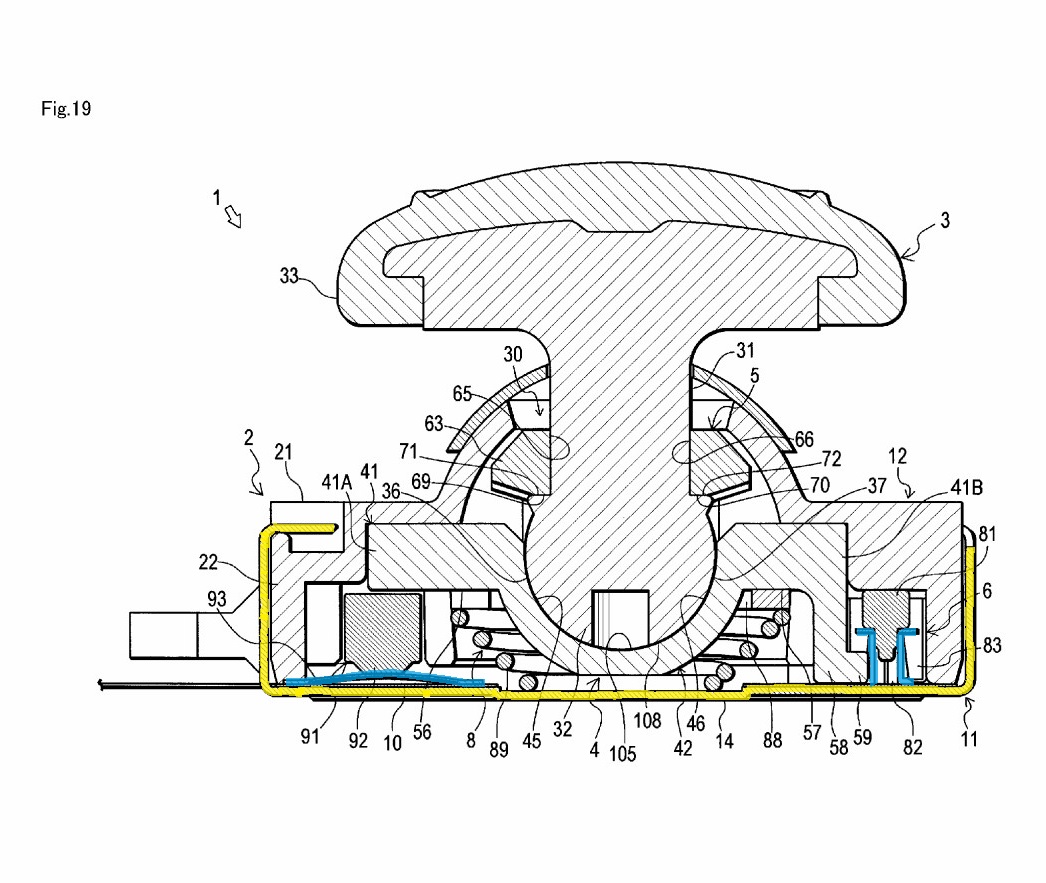Nintendo Switch Joy-Con drift explained — everything you need to know
Nintendo Switch Joy-Con drift explained — everything y'all need to know

Nintendo Switch owners accept been dealing with Joy-Con drift for years. It's when the analog sticks on the Switch controllers brainstorm to come off heart, causing a grapheme on screen to randomly begin moving without player input.
It's frustrating when you're positioning a shot in Splatoon 2 or when you try to land a tricky jump in Super Mario Odyssey. Finite precision is lost because of random departure that's no fault of the user.
- What you need to know virtually the Nintendo Switch OLED
- Nintendo Switch OLED vs Original Switch: Which should you buy?
- Plus: How to cheque if a Steam game works on Steam Deck
Unfortunately, Nintendo has washed very little to try and set up the Joy-Con drift issue. Even on the upcoming Nintendo Switch OLED model, the Japanese video game behemothic will go along to utilise the same analog sticks, with potentiometers designed by Japanese firm Alps Tall. This has led to much frustration from Switch fans hoping that the trouble would be fixed by the third console revision. It's become such a problem that "how to gear up Joy-Con drift" has become a popular search phrase on Google.
Below is everything you need to know about the dreaded Joy-Con drift along with videos that can testify you how to set it without sending it in for repairs.
What is Joy-Con drift?
To put it simply, Joy-Con drift is what happens when you move your graphic symbol on screen one way, but the character moves a unlike fashion. A more bookish answer is that Joy-Con migrate happens when an analog stick on the controller deviates from the central neutral position, leading to unwanted actor input.
For example, when trying to position your character in Animal Crossing to dig, your avatar may brainstorm walking forrad, even though yous're not pushing up on the analog stick.
To sympathize what'southward going on, we demand to open upward the analog stick and wait inside.

To sympathize what an analog stick is, we first have to interruption down what a potentiometer is. That'due south a device used to mensurate resistance. Think of the volume knob on a stereo. By turning it, the device knows to either increase or subtract the volume.
Here's the important role: the potentiometer uses a resistive element to measure movement. So that stereo dial is running alongside an electrically resistive material — in the case of analog sticks, commonly graphene — to so know how much input is being given.
In the image above, the teal plastic structure contains the graphene pads. As the analog stick moves, the white office rotates, and inside a "wiper" — a metal ring with a small-scale indentation — rubs confronting the graphene pads.
The YouTube aqueduct Branch Education has an first-class video that visually breaks downward how the inside of an analog stick works.
Hither's where bug ascend for the Switch analog sticks. While the potentiometers for most controllers are on the sides of the analog stick, to maintain the Switch's compact blueprint, Nintendo opted for a potentiometer that sits at the bottom of the stick.
Thank you to patents filed with the U.Due south. Patent and Trademark Office, we have an inside cross-section of how the analog sticks work. It seems that this truncated pattern is what's to blame for the Switch's Joy-Con drift.

In the Switch patent image higher up, you don't see a potentiometer where it normally would exist. That'southward considering Nintendo opted for a completely different pattern in which the graphene pads sit below the analog stick.
Victorstk, an aspiring game developer who published a video that solved the Joy-Con drift issue, posits that over time, pressure that ordinarily ensures the graphene pads are in contact with the analog stick's metal actuators begins to loosen.

Essentially, the metal frame (highlighted in yellow in the image higher up) puts pressure against the graphene pads and the mental actuators (highlighted in blue). Over time, the metallic frame begins to loosen, causing weaker and imprecise contact.
Victorstk noticed that when he applied pressure to the Joy-Con with his thumbs, of a sudden the drift would stop. He does a corking task of explaining this in his video, and how he was able to fix it.
Victorstk was able to employ a slice of paper-thin, calculation just enough material that would help give additional pressure when the Joy-Con was screwed dorsum together. It's an ingenious, though simple, solution.
Of course, to exercise this yourself, you'll demand to detach the Joy-Con. This video by YouTube channel TronicsFix is a bang-up guide to opening up the Joy-Con yourself. Luckily, you won't demand to fully disassembly the controller, merely enough to where you can see the back of the analog stick to attack a minor square of cardboard.
Before you brainstorm, though, know that opening up the Joy-Con voids your warranty.
If you don't desire to open up the Joy-Con, information technology is possible to use a can of compressed air along the analog stick. This should help dislodge whatsoever dust or particles interfering with the graphene pad. A few drops of isopropyl alcohol, above xc%, should work likewise. Only exercise annotation, these are all temporary solutions that won't last.
Joy-Con drift: why not accept Nintendo repair it for gratuitous?
For those not wanting to go through the hassle of repairing Joy-Cons at abode, sending it to Nintendo is the easiest option. Not merely is the service fast, mostly, users are sent a new or refurbished Joy-Con, gratuitous of charge.
To file a ticket with Nintendo, all you take to do is fill up out the information on the company's Joy-Con repair support website.
Unfortunately, Nintendo does not guarantee that yous'll become your original controller back. Meaning that if y'all have a special edition Joy-Con, similar the Super Smash Bros. Ultimate or the Creature Crossing: New Horizons variants, and so there'due south a chance you might not get your specific color. In these instances, it's best to hold off on sending your Joy-Con back to Nintendo.
This problem might not be fifty-fifty express to those that ain a limited edition Joy-Con either, but those that have a non-standard color. On the lesser of Nintendo'south Joy-Con repair site it states, "Please note that if your Joy-Con tin can't exist repaired, it may be replaced with a standard color Joy-Con (Greyness, Neon Blue, or Neon Crimson)."
This means that if you bought colors like neon yellowish, neon light-green, neon pink, neon orange, neon imperial or blue, all of which are readily available at multiple retailers, in that location'south a chance your replacement controller will be gray, neon blueish or neon cerise.
- More: The Legend of Zelda: Skyward Sword HD review
Source: https://www.tomsguide.com/how-to/nintendo-switch-joy-con-drift-explained-everything-you-need-to-know
Posted by: fishmandiffeclus.blogspot.com



0 Response to "Nintendo Switch Joy-Con drift explained — everything you need to know"
Post a Comment